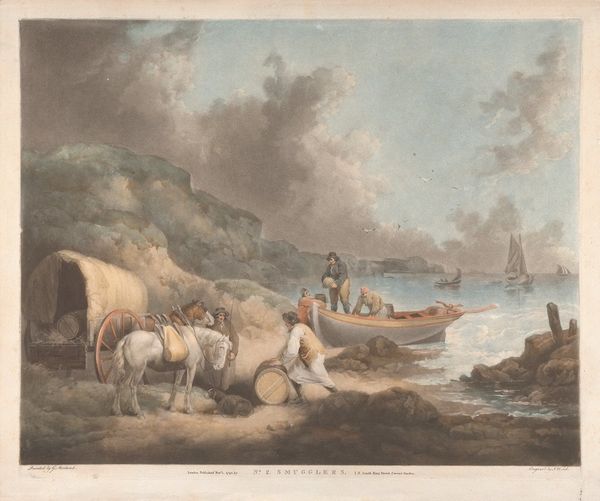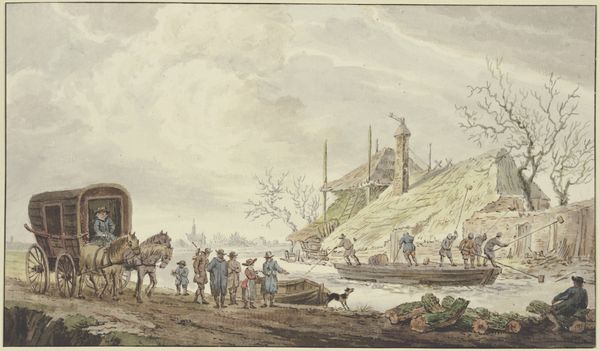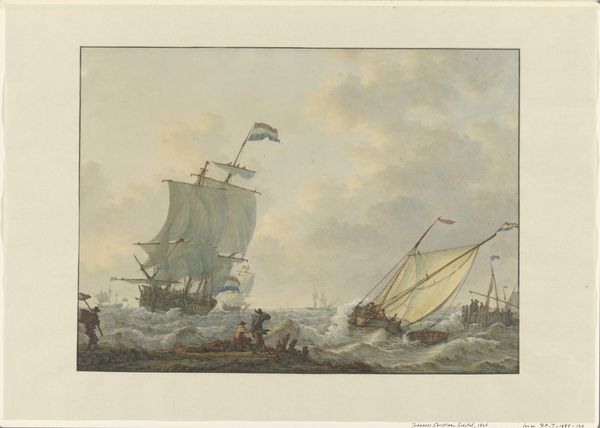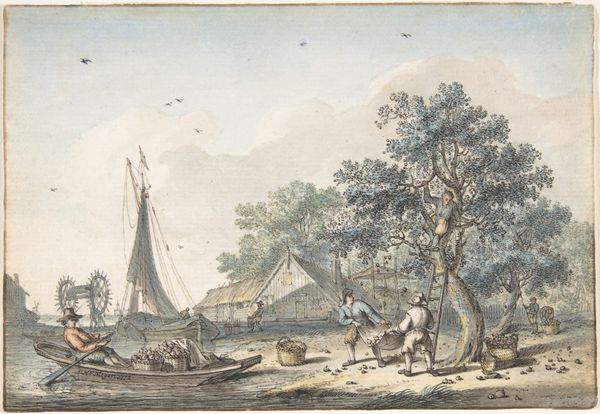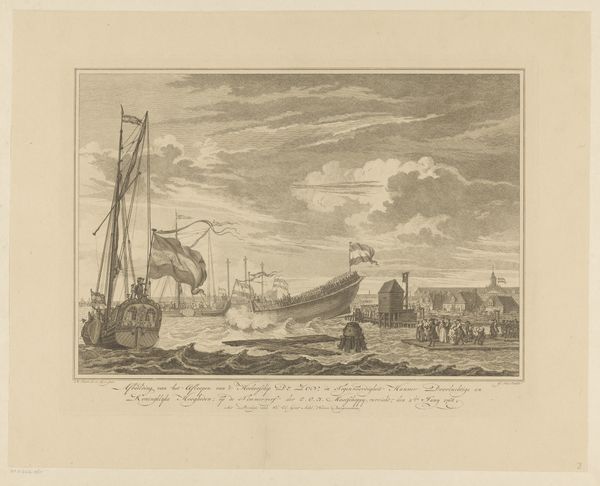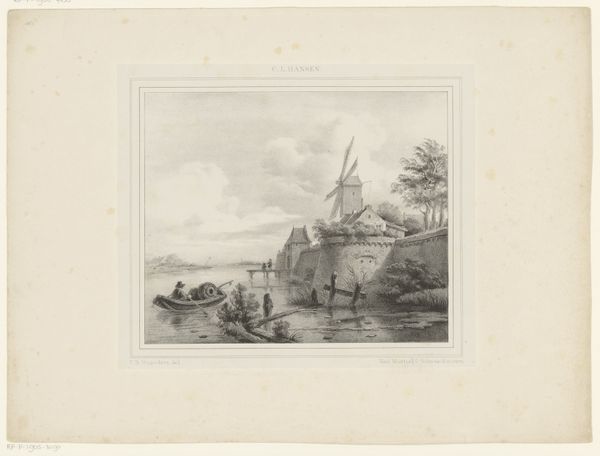
Figuren met vee bij rivieroever met veerboot 1845 - 1925
0:00
0:00
juliusjacobusvandesandebakhuyzen
Rijksmuseum
Dimensions: height 341 mm, width 362 mm
Copyright: Rijks Museum: Open Domain
Curator: This gentle watercolor, dating roughly from 1845 to 1925, is entitled "Figuren met vee bij rivieroever met veerboot," which translates to "Figures with cattle by a riverside with ferry." Julius Jacobus van de Sande Bakhuyzen is credited with this pastoral scene, now residing here at the Rijksmuseum. Editor: It's strikingly delicate. The hazy sky, soft washes of color… It evokes a profound sense of tranquility, a harmonious balance between humanity and nature. Everything seems still and yet about to move. Curator: Absolutely. There is a harmonious blending here that creates its feeling. Bakhuyzen masterfully utilizes symbols inherent to the romantic period. The figures leading the animals, the boats ready to depart: They represent passage and journey through life. Observe how he situates people within a specific kind of light—always connected to earth. Editor: Speaking of journey, consider the position of women and marginalized peoples in these agrarian scenes, how closely they labored. There’s the woman carrying a basket, the other ferry figures... They are the often-unacknowledged backbone of rural life, tied both to progress and a specific socio-economic context. Are they truly represented here, or romanticized? Curator: It's true; the visual rhetoric often overshadows such realities. Yet, if we explore, say, the basket on her head: That speaks of weight, responsibility, even survival and female burdens within rural economies of the 19th century. In every gentle depiction of that kind of work and the animal itself is both a representation of our complicated legacy and a reflection upon where human history situates those symbols across global cultures. Editor: Perhaps it reveals our current responsibilities—that visual narratives must constantly be re-examined. These images aren't simply about aesthetics; they depict societal structures, too, a way of life in transition. The serene façade prompts questions: progress for whom, at what cost? The visual echoes long-lost injustices of those periods, when land became property, which informs identity to this very moment. Curator: I agree, the piece encapsulates a specific period that can serve as an eternal point of cultural contemplation for all—offering something quite meaningful each time through the eye. Editor: Yes, art persists to ask us the very important questions we cannot forget.
Comments
No comments
Be the first to comment and join the conversation on the ultimate creative platform.


